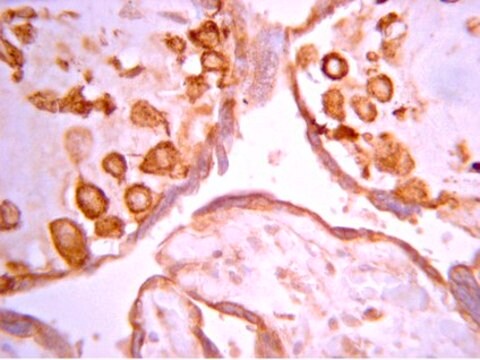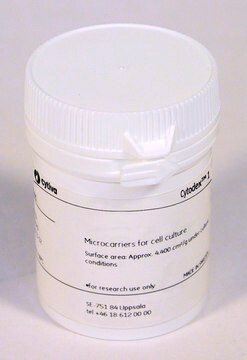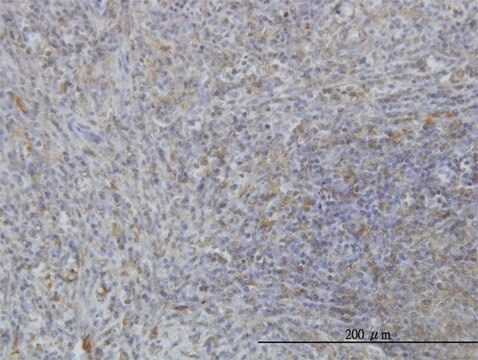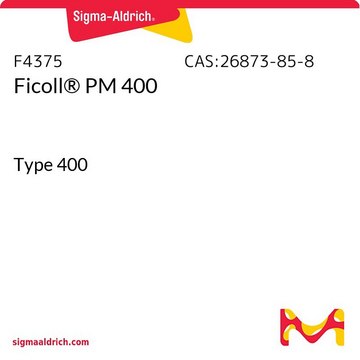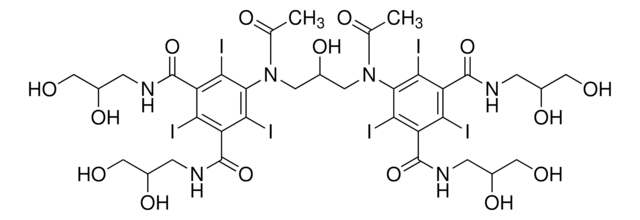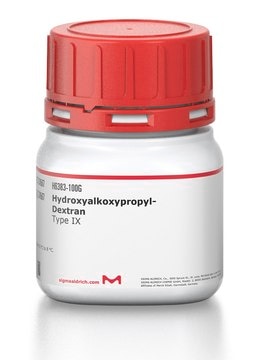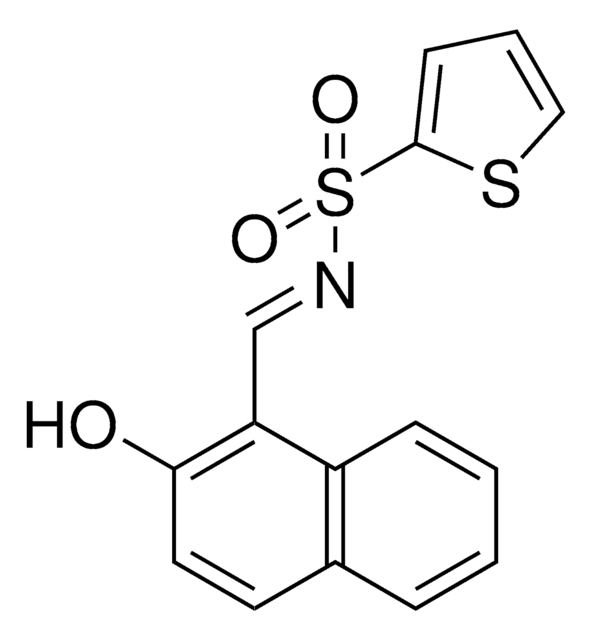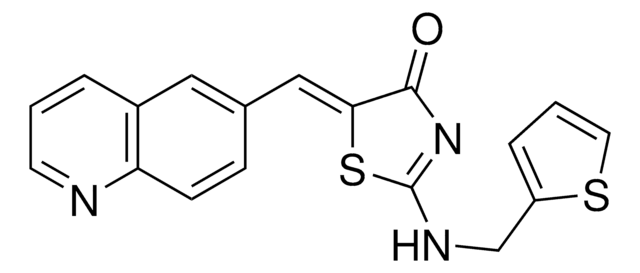P0370
Anti-phospho-Myristoylated Alanine-Rich Protein Kinase C Substrate (pSer152/156) antibody produced in rabbit
affinity isolated antibody, buffered aqueous glycerol solution
Synonym(s):
Anti-phospho-MARCKS (pSer152/156)
Sign Into View Organizational & Contract Pricing
All Photos(1)
About This Item
Recommended Products
biological source
rabbit
Quality Level
conjugate
unconjugated
antibody form
affinity isolated antibody
antibody product type
primary antibodies
clone
polyclonal
form
buffered aqueous glycerol solution
mol wt
antigen 80 kDa
species reactivity
rat, human, mouse
technique(s)
western blot: 1:1000
UniProt accession no.
shipped in
dry ice
storage temp.
−20°C
Gene Information
human ... MARCKS(4082)
mouse ... Marcks(17118)
rat ... Marcks(25603)
General description
The proteins of myristoylated alanine-rich C kinase substrate (MARCKS) family are identified as the ubiquitous substrates of Protein Kinase C (PKC). There are two identified members of MARCKS family, a 32 kDa ubiquitously expressed protein and a 20 kDa protein that is expressed in brain, macrophages and reproductive tissues. MARCKS proteins have vital role to play in the development of brain, cellular migration and adhesion, phagocytosis, neurosecretion and postnatal survival. MARCKS is also a key regulator in the mucin granule release and thereby secretion of mucus in airway. The phosphorylation domain of MARCKS protein contains the serine residues (serine 152, 156 and 163) that are activated by PKC. Besides PKC, MARCKS is also a target for calcium-calmodulin (CaM) and is reported as the potential protein that mediates a crosstalk between CaM and PKC. MARCKS participates in regulation of cytoskeleton by binding with actin and cell membrane
Anti-phospho-MARCKS (pSer152/156) specifically recognizes MARCKS (80 kDa) phosphorylated at serine 152/156.
Anti-phospho-MARCKS (pSer152/156) specifically recognizes MARCKS (80 kDa) phosphorylated at serine 152/156.
Immunogen
synthetic phosphorylated peptide derived from the region of rat MARCKS, which is phosphorylated on serine 152/156.
Application
A working dilution of 1:1000 is recommended for detection of MARCKS, phosphorylated at Ser152/156, by immunoblotting in rat hippocampal tissue homogenates.
Physical form
Solution in 10 mM HEPES, pH 7.5, containing 150 mM NaCl, 100 μg/ml BSA and 50% glycerol.
Disclaimer
Unless otherwise stated in our catalog or other company documentation accompanying the product(s), our products are intended for research use only and are not to be used for any other purpose, which includes but is not limited to, unauthorized commercial uses, in vitro diagnostic uses, ex vivo or in vivo therapeutic uses or any type of consumption or application to humans or animals.
Not finding the right product?
Try our Product Selector Tool.
Storage Class Code
10 - Combustible liquids
Choose from one of the most recent versions:
Already Own This Product?
Find documentation for the products that you have recently purchased in the Document Library.
The MARCKS brothers: a family of protein kinase C substrates.
A Aderem
Cell, 71(5), 713-716 (1992-11-27)
Duncan F Rogers
Respiratory care, 52(9), 1134-1146 (2007-08-25)
Mucus secretion is the first-line defense against the barrage of irritants that inhalation of approximately 500 L of air an hour brings into the lungs. The inhaled soot, dust, microbes, and gases can all damage the airway epithelium. Consequently, mucus
Anna Arbuzova et al.
The Biochemical journal, 362(Pt 1), 1-12 (2002-02-07)
The proteins of the MARCKS (myristoylated alanine-rich C kinase substrate) family were first identified as prominent substrates of protein kinase C (PKC). Since then, these proteins have been implicated in the regulation of brain development and postnatal survival, cellular migration
R H Palmer et al.
FEBS letters, 378(3), 281-285 (1996-01-15)
The 80kDa Myristolated Alanine-Rich C-Kinase Substrate (MARCKS) is a major in vivo substrate of protein kinase C (PKC). Here we report that MARCKS is a major substrate for the lipid-activated PKC-related kinase (PRK1) in cell extracts. Furthermore, PRK1 is shown
Y Li et al.
The Journal of biological chemistry, 276(44), 40982-40990 (2001-09-05)
Hypersecretion of airway mucin characterizes numerous respiratory diseases. Although diverse pathological stimuli can provoke exocytotic release of mucin from secretory cells of the airway epithelium, mechanisms involved remain obscure. This report describes a new paradigm for the intracellular signaling mechanism
Our team of scientists has experience in all areas of research including Life Science, Material Science, Chemical Synthesis, Chromatography, Analytical and many others.
Contact Technical Service